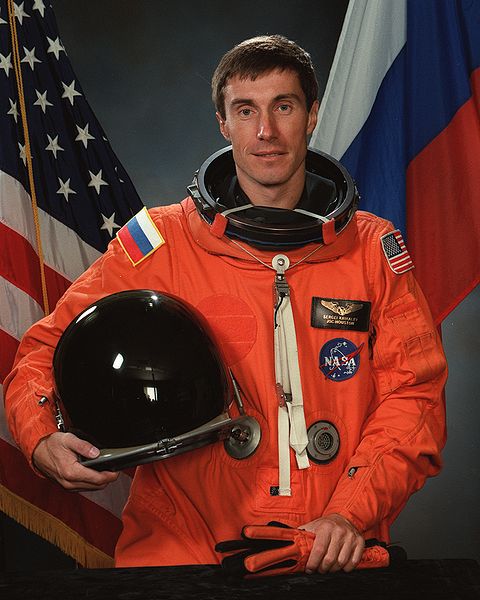Ever since NASA retired its space shuttle program in 2011, the only way to get up to the International Space Station is on a Russian Soyuz. That’s why the six humans currently orbiting in space — including two Americans and three Russians — might be paying attention to what’s happening on earth 320km below. As tensions run high between the US and Russia over the situation in Ukraine, geopolitics may find its way into space again.
Over at the blog Looking Up, Duncan Geere has written an excellent piece laying out possible astro-political scenarios in space. While all-out war remains unlikely, astronauts could become a point of leverage for Vladimir Putin in a larger conflict. “It’s not inconceivable that the International Space Station may play some part in this — either by denying the US the use of Soyuz, or simply by charging exorbitant amounts for it,” Geere writes. With ISS trips planned years in advance, there are only 10 Soyuz launches scheduled from now until 2016.
In addition, NASA has to be granted special exemptions to the Iran North Korea Syria Nonproliferation Act, which normally prohibits the US from buying space-related goods and services from Russia while it’s selling nuclear technology to Iran. NASA’s exemption expires in 2016, and, if the relationship between the US and Russia worsens, this could become a tougher sell.
Given that the space race was borne out of Cold War conflict, it can seem remarkable that collaboration between Americans with their Soviet and Russian counterparts ever happened in the first place.
Russian space scientist Roald Z. Sagdeev, former head of the Russian Space Research Institute, has written a long essay for NASA charting the ups and downs of space cooperation through the Cold War. The two space programs could only pursue serious collaboration after the dissolution of the Soviet Union. When the ISS launched, it was hailed as a beacon of international cooperation.

But the dissolution of the Soviet Union caused its own problems for cosmonauts, too, as Geere points out. In 1992, cosmonaut Sergei Krikalev (left) came back to earth after 313 surreal days stranded aboard the Mir space station. He had left the USSR; he returned to Kazakhstan.
The Soviet space complex known as the Baikonur Cosmodrome was located in what became Kazakhstan, and the newly formed country decided to charge exorbitant fees for its use. A host of budget problems complicated Krikalev’s return. When he did, it was to a new government, a new country, and even a new name for his hometown — now called St. Petersburg.
In 1994, Krikalev became the first Russian to ride in an American shuttle. The New York Times called him a “symbol of new cooperation.” Twenty years ago, it was time to be optimistic — but that optimism may seem misplaced now, as the crisis in Ukraine puts Russia and the U.S. at odds once again. [Looking Up]
